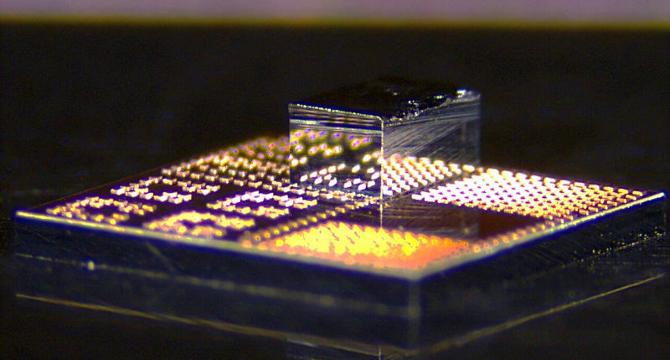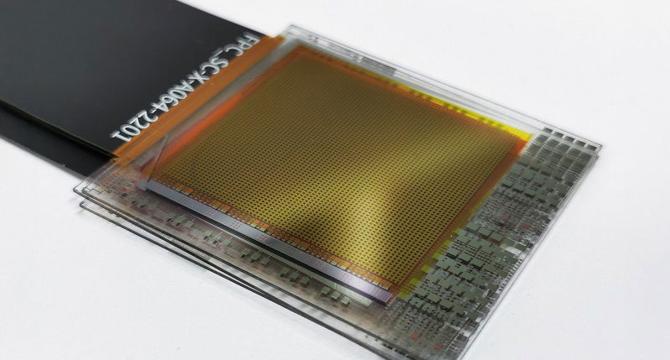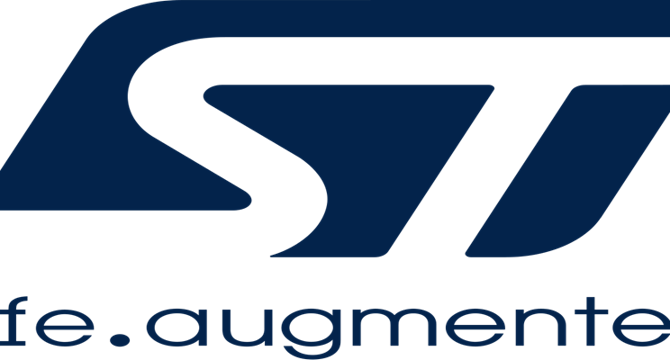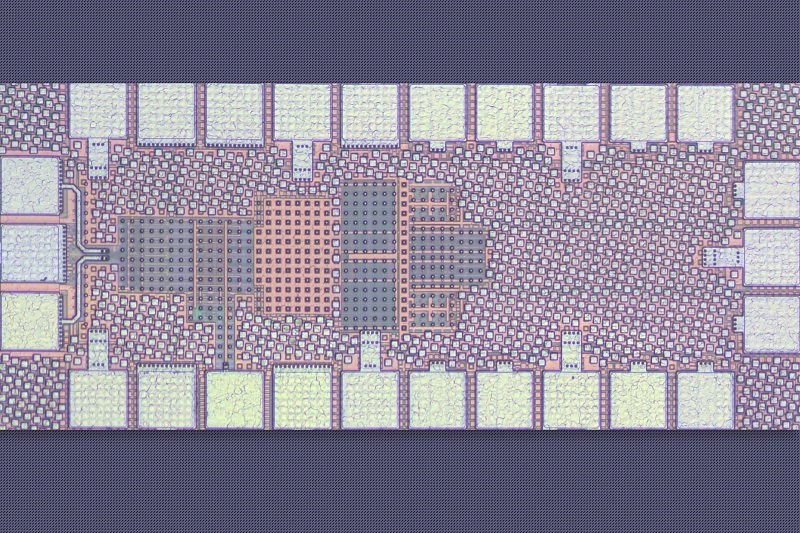Electronics News
Medium
296

Image Credit: Medium
Top Lenovo ThinkPads of 2025: Which Model is Right for You?
- Donic Electronics has curated the top Lenovo ThinkPad models of 2025, offering various configurations like Intel Core i5, i7, Ultra 5, and Ultra 7 to cater to users' needs for security, durability, and hybrid work adaptability.
- Lenovo's ThinkPad series remains a leader in business laptops, known for military-grade durability, exceptional keyboards, top-tier security features, and sleek designs.
- The 2025 lineup of ThinkPads boasts faster processors, improved displays, and enhanced AI functionalities, catering to productivity-driven users.
- The ThinkPad E Series, including E14 and E16 models, offers solid performance at a budget-friendly price point, ideal for small business owners, students, and remote workers.
- For business power users, the flagship T Series delivers powerful, reliable laptops like the T14 and T16 Gen 5, equipped with Intel Core Ultra processors, AI capabilities, and robust battery life.
- The L Series provides balanced performance with enterprise-grade features, such as the ThinkPad L14 Gen 4 and L16 models, suitable for growing businesses and remote or hybrid teams.
- The IdeaPad (IP) Series caters to casual users and students seeking an affordable yet stylish laptop for everyday tasks, media streaming, and entertainment.
- The ThinkBook Series offers stylish and powerful laptops like the 2025 ThinkBook 14 Gen 6 and ThinkBook 16 Gen 6, targeting startup founders, graphic designers, and hybrid workers.
- Users can find their ideal match based on performance needs, budget, and usage scenarios among the diverse Lenovo ThinkPad models available at Donic Electronics.
- The selection ranges from budget-conscious options to premium devices, ensuring there's a ThinkPad suitable for various user requirements.
- Donic Electronics provides a comprehensive range of Lenovo laptops, guiding users to select the right model that aligns with their professional and personal preferences.
- Whether users prioritize affordability, performance, or stylish design, Lenovo's ThinkPad lineup for 2025 offers diverse options to cater to a wide range of user needs.
- The article offers insights into each ThinkPad series, highlighting the target users, key features, and applications to assist readers in choosing the perfect Lenovo laptop.
- Readers can access a Lenovo laptop buying guide linked in the article to help navigate the selection process and make an informed decision based on their specific requirements.
- Whether users seek durability, performance, entertainment features, or a blend of these aspects, Lenovo's ThinkPad models provide suitable options to meet diverse user demands.
- The article presents a detailed overview of Lenovo's top ThinkPad models of 2025, showcasing the advancements in performance, security, and design aspects across different series.
- With a focus on providing laptops that adapt to modern workstyles and deliver reliable performance, Lenovo's ThinkPad offerings aim to meet the evolving needs of users.
- The comprehensive range of ThinkPad models available at Donic Electronics reflects Lenovo's commitment to offering versatile and high-quality laptops for various user preferences.
Read Full Article
17 Likes
Eletimes
332

Image Credit: Eletimes
Global Electronics Association Debuts; New Name Elevates IPC’s 70-Year Legacy as Voice of $6 Trillion Electronics Industry
- The Global Electronics Association, formerly IPC, has rebranded to reflect its role as the voice of the electronics industry.
- The association aims to enhance supply chain resilience, promote growth, and foster partnerships globally.
- The new vision is centered around 'Better electronics for a better world'.
- The Association plans to increase resources for advocacy, industry insights, and stakeholder communications.
- It will continue to focus on standards and certification programs under the IPC brand.
- A trade flows study revealed that global electronics trade totaled $4.5 trillion in 2023.
- Electronics supply chains are highly integrated globally, with components trade exceeding finished products trade.
- Top electronics exporters like China, Vietnam, and India heavily rely on global trade for electronic inputs.
- Resilience, rather than self-sufficiency, is highlighted as crucial in the electronics industry for competitiveness.
- The Global Electronics Association supports the entire electronics value chain from design to final product.
- The Association aims to facilitate collaboration and partnership for a thriving global electronics supply chain.
Read Full Article
20 Likes
Knowridge
210

Image Credit: Knowridge
Tiny gallium nitride chips could supercharge your smartphone and save energy
- MIT researchers have developed a new method using gallium nitride (GaN) to enhance computer chips' speed, energy efficiency, and affordability.
- The new method involves integrating tiny GaN transistors on top of traditional silicon chips, potentially improving internet speed, call quality, wireless signals, and battery life.
- Thousands of small GaN transistors are created on a GaN chip, cut into dielets, and bonded onto silicon chips using a low-heat process and copper instead of gold.
- This innovative process requires a minimal amount of GaN, reducing costs while maintaining high performance and aiding in heat dissipation for improved efficiency.
- The researchers demonstrated a compact power amplifier for wireless communication, smaller than a square millimeter, offering stronger signals, higher efficiency, and wider bandwidth compared to traditional silicon versions.
- The process seamlessly integrates into existing chip manufacturing systems, making it applicable to current and future electronics without the need for new factories, potentially benefiting fields like quantum computing.
- A specialized tool was designed to accurately place GaN pieces on silicon chips using vacuum suction and nanometer-level precision, with bonding carried out at low heat and pressure to reduce costs and prevent damage.
- The technology paves the way for powerful, compact chips combining affordable silicon with the speed and strength of GaN, aiding in the advancement of faster, more energy-efficient wireless networks and computing systems.
- The chip design addresses the demand for increased power in smaller devices, showcasing potential to keep up with evolving tech requirements.
Read Full Article
12 Likes
Medium
57

Why Tinkercad Feels Like the Canva of Circuits
- Tinkercad is likened to the Canva of circuits due to its user-friendly interface and forgiving nature for beginners.
- Users can drag components, wire them up, and simulate circuits without needing advanced knowledge of voltage or circuit theory.
- Mistakes made in Tinkercad result in error messages rather than actual damage to components, fostering a smooth and creative learning experience.
- The platform is not limited to beginners; it serves as a powerful sandbox for individuals working on embedded systems projects.
- Tinkercad facilitates quick testing of logic, wiring, and code for projects like sensor-based security systems or smart irrigation setups.
- Users can simulate inputs such as distance, light, or button presses to observe their system's responses in real-time on the screen.
- The accessibility and visual feedback of Tinkercad make it valuable for students, tinkerers, and professionals in refining designs or presenting concepts.
- It serves as a simulation tool that builds confidence in users by bridging the gap between virtual testing and real-world applications.
- Tinkercad's ease of use and focus on curiosity enable users to explore and experiment with circuit design without feeling overwhelmed.
- Similar to Canva democratizing design, Tinkercad is democratizing embedded systems by providing a platform that encourages learning through experimentation.
- The platform empowers users to combine virtual simulations with real-world projects, fostering a gradual transition from theory to practical application.
- The writer anticipates leveraging Tinkercad to create interactive projects that blend virtual components with physical interactions, sparking creativity and innovation.
Read Full Article
3 Likes
Knowridge
391

Image Credit: Knowridge
Perovskite sensors could make cameras sharper, smarter, and more sensitive
- Researchers are developing a new image sensor using a material called perovskite to improve camera technology.
- Perovskite can be tuned to absorb specific colors by altering its chemical composition, unlike silicon sensors which detect all colors at once.
- This new sensor technology allows for vertical stacking of red, green, and blue layers, resulting in higher light utilization and better resolution.
- Perovskite sensors offer three times the brightness and resolution compared to silicon-based sensors.
- Working prototypes have been built, showing improved light sensitivity and color accuracy.
- The researchers aim to reduce pixel size further to enhance performance beyond current silicon sensors.
- Perovskite sensors can avoid common digital photo issues like moiré effect and complex color reconstruction.
- These sensors have applications beyond consumer photography, including medical imaging, environmental monitoring, and agriculture.
- Custom sensors can be created using perovskite to detect specific colors for various advanced imaging tasks.
- Integration of existing electronics with perovskite technology is a requirement for future advancements in sensor development.
- The potential benefits include more powerful, compact, and versatile image sensors surpassing current technology standards.
Read Full Article
23 Likes
Knowridge
102

Image Credit: Knowridge
Your web browser may be spying on you — Even without cookies
- New research from Texas A&M University reveals that many websites use browser fingerprinting to track users even after clearing cookies.
- Browser fingerprinting involves collecting details such as screen size, device type, and time zone to create a unique identifier.
- Unlike cookies, browser fingerprints are difficult to hide, making it challenging for users to maintain privacy online.
- Dr. Nitesh Saxena led the study, providing clear evidence that companies actively utilize fingerprinting for tracking.
- The study introduced a tool called FPTrace to uncover how websites and ads responded to altered browser fingerprints.
- Websites continued tracking users with fingerprints even when cookies were cleared, sharing data with advertisers in real time.
- The researchers discovered that users were tracked using fingerprints even if they had opted out under privacy laws like GDPR or CCPA.
- Current privacy tools and browsers are inadequate to prevent fingerprinting, necessitating stronger protections and regulations.
- Collaborating with Johns Hopkins University, the researchers stress the need for transparency and enhanced privacy safeguards for internet users.
Read Full Article
6 Likes
Eletimes
144

Image Credit: Eletimes
STMicroelectronics Introduces Advanced Human Presence Detection Solution to Enhance Laptop and PC User Experience
- STMicroelectronics introduces Human Presence Detection technology for laptops, PCs, and monitors, reducing power consumption by over 20% per day and enhancing security and privacy.
- The solution combines ToF sensors with AI algorithms for hands-free Windows Hello authentication and benefits like longer battery life and user-privacy notifications.
- The technology aims to make devices energy-efficient, secure, and user-friendly, as stated by STMicroelectronics' Executive VP Alexandre Balmefrezol.
- 3D sensing in consumer applications has seen a rise since 2023, with ToF technology expanding beyond smartphones into various devices.
- ST's 5th generation HPD solution integrates FlightSense 8x8 multizones ToF sensors with AI algorithms for features like adaptive screen dimming and multi-person detection.
- The solution offers functionalities like walk-away lock, wake-on-attention, and tailored AI algorithms for enhanced user experience and privacy protection.
- ST's comprehensive AI-based development process involved data collection, cleaning, training, and integration into products, achieving significant advancements in head orientation tracking.
- The ToF sensor used ensures user privacy without capturing images, offering features like adaptive screen dimming and walk-away lock for improved user experience.
- Enhanced privacy features include multi-person detection to alert users of unauthorized viewing, as well as advanced filtering algorithms to prevent false triggers.
- The ready-to-use solution includes the FlightSense ToF sensor, low-power AI algorithms, and features like human presence detection, gesture recognition, and posture analysis.
Read Full Article
7 Likes
Knowridge
309

Image Credit: Knowridge
MIT’s new receiver could supercharge 5G smart devices
- MIT researchers have developed a tiny, energy-efficient chip designed for 5G-compatible Internet of Things devices, making them smaller, cheaper, and better at blocking wireless interference.
- The new receiver chip is up to 30 times better at handling signal interference than traditional versions, using less than a milliwatt of power and taking up less space than the tip of a pencil.
- The chip features precharged, stacked capacitors connected by miniature switches that act as a smart filter to remove unwanted signals before they disrupt the receiver's performance.
- Traditional IoT receivers rely on fixed frequencies and simple filters, but the new 5G networks require devices to handle a wide range of frequencies while remaining cost-effective and power-efficient.
- Using the Miller effect, the MIT team integrated the capacitor network inside the receiver's amplifier circuit, resulting in a receiver circuit smaller than 0.05 square millimeters without sacrificing performance.
- The chip uses a technique called bootstrap clocking to provide reliable switch operation with low voltage, effectively blocking out harmful interference like harmonic noise that can affect receiver performance.
- With its simple design using basic components like switches and capacitors, the chip is expected to be easier and cheaper to produce, adaptable to various IoT devices, from medical wearables to smart city sensors.
- Researchers aim to make the chip more independent by exploring energy harvesting from existing wireless signals, potentially enabling the development of self-powered devices for a smart future.
Read Full Article
18 Likes
Knowridge
376

Image Credit: Knowridge
This wearable device improve balance and prevent falls in older people
- A new wearable device called WBED, developed by a team from Tokyo University of Science, helps improve balance and prevent falls in older people.
- The device resembles high-tech suspenders and uses soft artificial muscles to create unexpected movements, helping users stay upright without falling.
- It is portable, easy to use, and suitable for home use or physical therapy sessions, providing a convenient way to train balance.
- In a study with 18 healthy men, those who trained with the real WBED showed significant improvements in reacting to unexpected balance shifts.
- Regular use of WBED could lead to fewer falls and increased confidence in walking or standing, benefiting older adults and those in physical therapy.
- Athletes could also benefit from the WBED, improving stability and coordination during training to enhance performance and prevent injuries.
- As the global population ages, devices like WBED could help people stay independent and safe, particularly in countries with a high elderly population like Japan.
- The WBED offers a practical way to enhance balance and quality of life for various individuals, not limited to older adults.
Read Full Article
22 Likes
Eletimes
372

Image Credit: Eletimes
Edge AI Foundation: powering the next wave of intelligence at the edge
- AI evolved from cloud-based infrastructure to edge AI to address challenges like latency, energy consumption, and privacy concerns.
- The Edge AI Foundation, formerly TinyML, drives the transition towards smarter, faster, and more pervasive AI at scale.
- Cloud-based AI development using high-performance GPUs led to significant advancements in AI capabilities, including generative AI.
- Concerns over latency, energy consumption, and privacy led to the realization that AI computations do not need to rely solely on the cloud, paving the way for edge AI.
- Edge AI enables local processing on devices like sensors and microcontrollers, reducing the reliance on cloud services and addressing latency and privacy issues.
- STMicroelectronics' STM32 microcontroller family and intelligent MEMS sensors facilitate edge AI applications like anomaly detection, gesture recognition, and environmental monitoring.
- The Edge AI Foundation promotes advancements in edge AI through global conferences and collaborative efforts between academia and industry.
- The Foundation, initially TinyML, evolved to the Edge AI Foundation to reflect the expansion of AI technologies operating at the network edge.
- The Edge AI Foundation engages in initiatives like Edge AI Working Groups, Edge AI Labs, and Edge AIP to make edge AI accessible and impactful.
- STMicroelectronics collaborates with the Edge AI Foundation as a Strategic Leader Sponsor, contributing to working groups and promoting edge AI solutions.
- Edge AI is poised to drive intelligent agents and systems capable of autonomous reasoning and acting, revolutionizing various sectors from smart devices to industrial automation.
Read Full Article
22 Likes
Mensjournal
129

This Amazing Watch Revolutionized Time Keeping in 1960—Now It's Back
- Accutron revolutionized watchmaking in 1960 with the first electronic wristwatch using a vibrating tuning fork for accuracy.
- The technology was also used in NASA spacecraft instrumentation during the Space Race.
- The brand has reintroduced the Accutron Spaceview 314 with a hand-assembled movement.
- The new Spaceview 314 features a skeletonized dial, perlage, and Geneva stripes.
- Updates include a larger case size, refined finishing, and a relocated crown.
- The brand aims to honor its pioneering past while advancing in precision timekeeping.
- The Spaceview 314 will come in stainless steel, grade 5 titanium, and 18-karat yellow gold options.
- Each version will feature LumiNova-painted hands and be splash-resistant.
- Italian leather straps will accompany each variant.
- The watch will be priced at $5,990 for steel, $6,200 for titanium, and $31,500 for 18k gold.
- The Accutron Spaceview 314 will be available later in Fall.
- The innovation is a tribute to Accutron's legacy and a step forward in watchmaking.
- The new movement combines modernity and style with enhanced features.
- Accutron's president emphasizes the importance of this launch for the future of timekeeping.
- The watches will feature enhanced aesthetics and improved functionality compared to the original model.
Read Full Article
7 Likes
Knowridge
124

Image Credit: Knowridge
Light-speed AI chip could power the future of 6G wireless
- Engineers are using artificial intelligence (AI) to make wireless networks faster and more efficient.
- Researchers at MIT have developed a new AI processor using light technology to process wireless signals at the speed of light.
- The new chip operates about 100 times faster than current digital systems and consumes less energy, making it ideal for small devices.
- This chip, named MAFT-ONN, utilizes photonics to operate faster and more efficiently than traditional AI chips.
- MAFT-ONN could be beneficial for future 6G networks by allowing smart devices to adapt signal formats in real-time.
- The chip could also help self-driving cars and medical devices to respond instantly and monitor health without delays.
- MAFT-ONN processes signals in the frequency domain and saves time and energy by avoiding the conversion of signals into images.
- The chip performs both simple and complex operations required for deep learning using light alone.
- In testing, the chip achieved signal classification with high accuracy in a short amount of time compared to digital systems.
- Researchers plan to extend the chip's capabilities for complex AI models and further developments.
- This breakthrough has the potential to revolutionize not only wireless networks but also various technologies requiring fast and efficient AI.
Read Full Article
7 Likes
Knowridge
391
Image Credit: Knowridge
Kirigami-inspired display stretches 200% without losing a pixel
- Researchers in South Korea develop a breakthrough in stretchable screen technology inspired by kirigami.
- The team creates the world's first stretchable display that can expand evenly up to twice its size without losing quality.
- Featured in Advanced Functional Materials, the stretchable screens could revolutionize display technology.
- Flexible screens face challenges with uneven stretching causing distorted images.
- Current flexible screens use hard parts connected by wires, limiting expansion and quality.
- Soft, rubbery materials are more ideal for stretchable displays but stretch unevenly.
- POSTECH team uses kirigami-inspired cuts on rubbery material to enable even stretching.
- The tiny cuts help spread stretching force evenly across the screen, maintaining uniformity.
- Adding 'strain stoppers' helps control and limit stretch directions for better screen behavior.
- Special material used, chiral liquid crystal elastomer (CLCE), changes color when stretched, ideal for security applications.
- CLCE allows for displaying hidden patterns visible only when stretched, enhancing security measures.
- The innovative approach opens possibilities for wearable tech, secure devices, and flexible displays.
- Professor Su Seok Choi highlights solving uneven stretching as crucial for practical stretchable screens.
Read Full Article
23 Likes
Knowridge
282

Image Credit: Knowridge
Smart payments could bring bus travel back in style
- A study suggests that smart changes in bus payment systems and real-time information could increase bus ridership by over 30% in southern England.
- Improving the passenger experience with modern technology like contactless payments and mobile apps can make bus travel more appealing.
- Survey data and machine learning tools were used to determine passenger preferences and behaviors.
- Easy payment methods and accurate bus arrival information were found to significantly influence people's choice of transportation.
- The goal is to make bus travel smoother and stress-free to encourage more people to choose buses over cars.
- Machine Learning Influence Flow Analysis (MIFA) helped predict the impact of changes in payment and information systems on public opinion and behavior.
- Challenges that deter people from using buses include complex payment systems, unclear schedules, safety concerns, and delays.
- Introducing smartcard payments, mobile apps with live tracking, and improved bus lanes can enhance the attractiveness of bus travel.
- Integrated ticketing systems that allow seamless travel across different modes of transport could further boost bus ridership.
- Government policies should facilitate collaboration among different transport providers to improve overall travel experiences.
- Enhancing bus convenience and reliability through smart payments and real-time information is crucial to making buses a preferred travel option.
Read Full Article
16 Likes
Mit
35

Image Credit: Mit
Photonic processor could streamline 6G wireless signal processing
- MIT researchers have developed a novel AI hardware accelerator for wireless signal processing, using an optical processor that performs machine-learning computations at the speed of light, classifying wireless signals in nanoseconds.
- The photonic chip is significantly faster and more energy-efficient than digital alternatives, making it scalable and flexible for various high-performance computing applications, including future 6G wireless technologies like cognitive radios.
- This new hardware accelerator enables edge devices to perform real-time deep-learning computations, potentially revolutionizing applications like autonomous vehicles' reactions to environmental changes or continuous monitoring by smart pacemakers.
- The optical neural network architecture, named MAFT-ONN, encodes signal data and conducts all machine-learning operations in the frequency domain, achieving high efficiency and scalability for signal processing.
- MAFT-ONN can fit 10,000 neurons on a single device, performing necessary multiplications efficiently through photoelectric multiplication and achieving signal classification with high accuracy in nanoseconds.
- The researchers aim to enhance MAFT-ONN further by implementing multiplexing schemes for increased computations, expanding into complex deep learning architectures, and optimizing performance for future applications.
Read Full Article
2 Likes
For uninterrupted reading, download the app